 Although her formal training was in graphic design and illustration, a visit to Indonesia in the 1980's led her down the path of textiles, silk painting and batik.
Although her formal training was in graphic design and illustration, a visit to Indonesia in the 1980's led her down the path of textiles, silk painting and batik.Her skill with pen and paper however obviously still serves her well:

 Now a successful, full-time batik artist, Isabella works from home in the peaceful town of Hatherleigh in Devon. She, her wonderful husband Graham and their loyal companion Jillis the dog welomed me with open arms/jaws and I have learned so much from them all.
Now a successful, full-time batik artist, Isabella works from home in the peaceful town of Hatherleigh in Devon. She, her wonderful husband Graham and their loyal companion Jillis the dog welomed me with open arms/jaws and I have learned so much from them all. From initial paintings with gutta resist on silk, her work has now broadened to various shibori techniques and wax has become her medium of choice.
From initial paintings with gutta resist on silk, her work has now broadened to various shibori techniques and wax has become her medium of choice. For the last two years in particular, Isabella has begun to consider the environmental implications of her work and her research into natural dyes and fibers reflect her dedication to the subject.
For the last two years in particular, Isabella has begun to consider the environmental implications of her work and her research into natural dyes and fibers reflect her dedication to the subject. In the past, I have always considered batik to be a purely creative process but at Isabella's I found myself studying the chemistry, temperature, pH, mortants, etc. of the natural dyes and it feels like the more I learn, the more I realize how much more there is to know!
In the past, I have always considered batik to be a purely creative process but at Isabella's I found myself studying the chemistry, temperature, pH, mortants, etc. of the natural dyes and it feels like the more I learn, the more I realize how much more there is to know! In spite of the hard work, I have become completely addicted to the idea of painting with natural colors. Not only are they better for the environment, but they are just so incredibly beautiful! Each dye has a different story, birthplace and reaction to temperature/mortant/pH, etc and I want to understand them all!
In spite of the hard work, I have become completely addicted to the idea of painting with natural colors. Not only are they better for the environment, but they are just so incredibly beautiful! Each dye has a different story, birthplace and reaction to temperature/mortant/pH, etc and I want to understand them all! This technical aspect to natural dyes may be complicated but it is the creative limitations of using them that is the real challenge.
This technical aspect to natural dyes may be complicated but it is the creative limitations of using them that is the real challenge.Not only are the dyes difficult to control but even getting them to stay on the fabric, much less be light and wash resistent seems nearly impossible at times. In terms of batik, it is even more difficult because the high temperatures required to color the fabric will melt the wax before any image or design can form.
What is a batik artist to do? This could be the start of an interesting exploration and I can't wait to start. Stay tuned!
The pre-mordanted scarf in Indonesia I brought from Indonesia was perfect for my first natural dye experiment!
The first dye bath was with this plant, called madder.
 I used a sort of shibori technique for the design
I used a sort of shibori technique for the design
 I used a sort of shibori technique for the design
I used a sort of shibori technique for the design
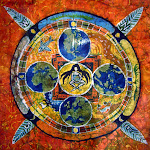
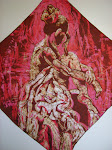

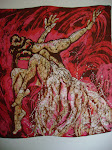

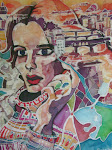
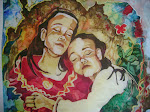




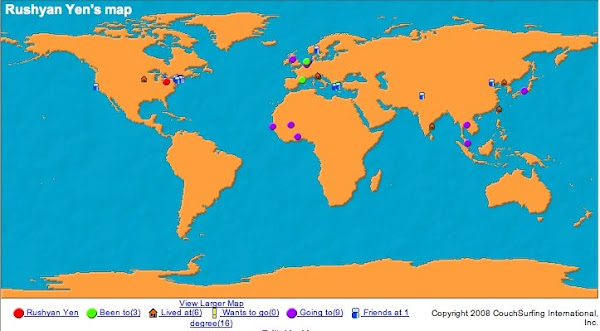
No comments:
Post a Comment